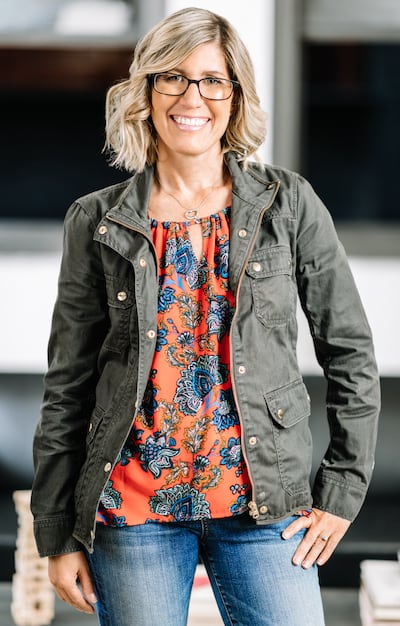
The Business of Fashion
Agenda-setting intelligence, analysis and advice for the global fashion community.

Agenda-setting intelligence, analysis and advice for the global fashion community.

In 2020, the wholesale management platform Joor launched Joor Passport — a digital destination for buyers and retailers to connect with brands in a significantly disrupted industry amid the Covid-19 pandemic.
Two years later, Joor Passport has hosted 58 global fashion events, welcomed more than 320,000 retail visitors from over 150 countries, and 5,200 participating brands have sold more than 730,000 products via the virtual platform.
Joor’s wholesale management platform powers the B2B businesses of the industry’s largest conglomerates, LVMH, Kering, Richemont and Capri Holdings, and retailers such as Neiman Marcus, Harrod’s and Shopbop also leverage the platform for all their assortment planning and buying. Joor also has presence at London, New York and Istanbul fashion weeks, as well as trade shows such as Cabana in North America, CIFF in Denmark, Ontimeshow in China, and JETRO in Japan.
Having closed its Series D funding round at $46 million last year, the company is seeking ambitious growth amid the industry’s continuing digital evolution. Here, Joor CEO Kristin Savilia shares her insights on the technological innovations that will continue to transform global wholesale markets, and the growth opportunities she sees within them.

How is technology continuing to transform wholesale events?
The adoption of digital technology is creating greater efficiencies and wider audiences in the buying and selling process — for one, it provides access to a global audience 24/7.
For example, last year we launched a virtual fashion event in partnership with JETRO — the Japan External Trade Organisation — called “Showcase Japan”. This event was designed to feature 31 emerging Japanese designers and introduce them to a global audience of retail buyers. In our Spring 2021 and Fall 2021 iterations of “Showcase Japan”, we brought in 25,000 retail visitors from 71 countries. Every order placed for these events has come from outside Japan, establishing new relationships and distribution for these brands with retailers around the world.
Beyond providing 24/7 global accessibility, digital technology is also increasing more sustainable practises. The use of 3D and digital samples is decreasing excess sample production, and we have seen that Joor Passport reduces the frequency of travel while still enabling the discovery of new brands.
86 percent of buyers said they have a medium to high level of interest in discovering new brands. This desire was most pronounced in North America.
What wholesale trends are you witnessing across different regions?
We have a vast network of over 13,200 brands and 365,000 retailers in more than 150 countries, which gives us a uniquely global perspective. The majority of our business is split between Europe and North America, but our fastest-growing region is APAC — predominantly Japan and China.
Based on a recent market survey we conducted, there were key differences between the US, Europe and Asia. About 50 percent of total retailers on Joor’s platform extended their buying season for Fall ‘22 to place orders later in season, which is more pronounced in North America with 54 percent of buyers. In EMEA, it’s 45 percent and in APAC, 37 percent.
The interest in discovering new brands is also high. Some 86 percent of buyers overall said they have a medium to high level of interest in discovering new brands at the moment. Once again, this desire was most pronounced in North America.
How can international brands leverage this interest in discovery?
To help meet buyers’ increased desire at present to discover new brands in new markets, I believe it’s important to work with a local partner in each market who understands the culture. That’s been key in our formula for success.
For example, partnering with JETRO gives us access to their expertise and knowledge of talented emerging Japanese designers. They have identified brands to be featured on Joor who are ready for global expansion, thereby surfacing new product to our extensive network of worldwide retailers.
An independent boutique in New York recently purchased from two brands featured in “Showcase Japan” — Upper Hights and Red Card — and has already placed subsequent orders with these brands. It would have been very unlikely that this retailer would have travelled to Japan to discover an upcoming brand there. However, leveraging localised insights and expertise from a partner who understands the market, and Joor’s innovative digital platform, has been a winning combination to connect this retailer with new resources.

What upcoming innovations are likely to have the next big impact on market operations?
This pandemic has changed the way people think about their showrooms. People are looking for their virtual showrooms to not just be commerce sites, but to also provide a rich and engaging shoppable experience.
With this in mind, we have collaborated with best-in-class technology partners to integrate 3D renderings and VR experiences on Joor, allowing buyers to walk through virtual showrooms. These products that we’ve added to Joor enable the audience to capitalise on digital even further. We’re a little bit ahead of the trend as not all brands are using 3D and VR yet, but we are here to help guide them.
What next-gen technological solutions are brands seeking today?
A key sticking point that our partners have shared with us is, “We don’t have enough samples to deliver to all the different retailers that need them.” So, a digital solution to this would be 3D and 360 imagery.
We have supported 360 imagery since 2020, which means if you have at least one set of samples in your showroom, the photography can be done in your showroom, put onto our digitised platform and shared with all your retailers so they can have access to this content. We have now added 360 video and 3D imagery capabilities — through partnerships with Orb360 and Vntana respectively — that provide even further opportunities to accurately portray products in a digital environment.
People are looking for their virtual showrooms to not just be commerce sites, but to also provide a rich and engaging shoppable experience.
How significant a shift is the introduction of 3D digital samples?
The real evolution here is not having to have a physical sample in the first place and that’s where brands are starting to move towards with 3D. We see AI image attribution being another real game changer, which will provide the ability to, in the wholesale space, allow for better tagging of images.
When you think about wholesale B2B, people don’t spend a lot of time with attributes — they save that for the consumer side of their business. But if you think about what is needed in B2B, in order to find items more easily, it is stronger and consistent attribution. Joor’s working on a solution related to this that we’re pretty excited about.
How should brands and retailers most effectively leverage technology to improve their operational capabilities?
Being digital across the entire wholesale ecosystem is by far the most transformative action brands and retailers can take to step up operational capabilities, rather than focusing on digitising just a segment of it. Then, when everything is digital, your access to data is real-time, so you’re better at forecasting.
Data and analytics are a big piece of this operational process — it enables more informed decision-making by brands and retailers, like enabling more effective, more immediate collaboration. For example, our feature The Edit allows brands to virtually collaborate with their buyers and personalise assortments down to final selections.
Analytics also helps us pinpoint where we can increase the efficiency of the buying process and add value for our clients. We could see payments to brands were taking up to three and a half months, so we decided to introduce Joor Payments as an on-platform solution last year, which facilitates online bulk invoicing and speeds up the payment collection process to just a few days.
This is a sponsored feature paid for by Joor as part of a BoF partnership.
From analysis of the global fashion and beauty industries to career and personal advice, BoF’s founder and CEO, Imran Amed, will be answering your questions on Sunday, February 18, 2024 during London Fashion Week.
The State of Fashion 2024 breaks down the 10 themes that will define the industry in the year ahead.
Imran Amed reviews the most important fashion stories of the year and shares his predictions on what this means for the industry in 2024.
After three days of inspiring talks, guests closed out BoF’s gathering for big thinkers with a black tie gala followed by an intimate performance from Rita Ora — guest starring Billy Porter.